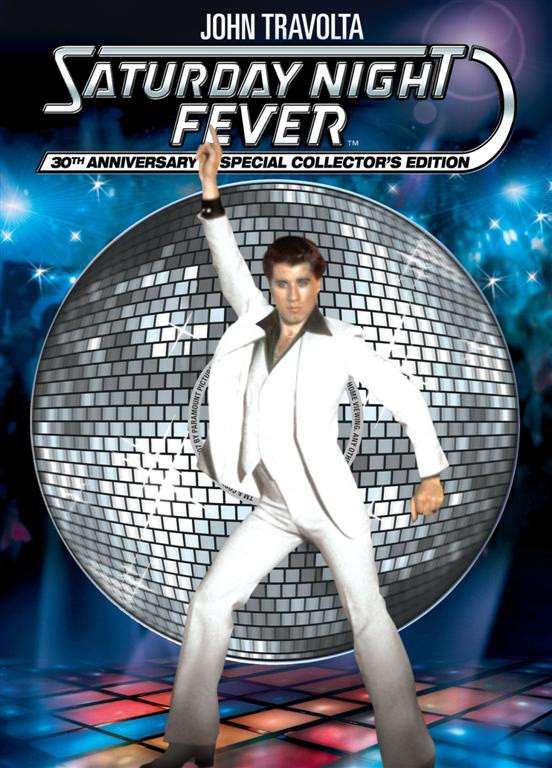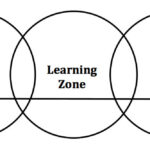The 1970s were an explosive decade of cultural and political change, and this dynamic era was perfectly reflected in its vibrant artistic expressions. Music and dance underwent a radical transformation, giving birth to some of the most unforgettable and iconic dance trends the world has ever seen. As new music genres emerged and discotheques mushroomed across cities, a dance revolution was underway. Television shows like Soul Train amplified the phenomenon, broadcasting the latest moves into homes and further cementing dance’s place in pop culture. Characterized by flamboyant fashion, towering platform shoes, and the infectious rhythms of disco, the 70s dance floor became a playground of freedom and expression. While the fashion of the decade is instantly recognizable, the dances themselves are just as iconic. Let’s take a groovy trip back in time and explore some of the funkiest 1970s Dances that still get people moving today.
1. The Hustle
Emerging in 1975, The Hustle quickly became synonymous with the disco era. Van McCoy’s hit song “Do The Hustle” catapulted the dance into mainstream popularity, and the term “hustle” became broadly associated with many disco-style dances of the time. Interestingly, The Hustle wasn’t a single, monolithic dance; it evolved into various forms. From West Coast to East Coast styles, and partner to line dance variations, there was a Hustle for everyone. The couples version, showcased in the iconic film Saturday Night Fever, became a sensation. This dance, blending elements of Swing and Latin rhythms with a pulsating 70s disco beat, remains a popular choice in ballrooms worldwide, proving its enduring appeal.
2. The Bump
Simplicity was key to the widespread appeal of The Bump. This dance craze minimized complex steps, focusing on a single, engaging move. Dancers, typically in pairs and standing side-by-side, would sway rhythmically to the music, gently bumping hips on every other beat. While intended to be a gentle nudge, the “bump” could sometimes be more impactful, with smaller dancers humorously finding themselves propelled across the dance floor by overzealous partners! The Bump’s easy-to-learn nature and infectious fun led to several songs adopting its name, but it could be danced to virtually any upbeat track of the era.
3. YMCA Dance
Universally loved and instantly recognizable, the YMCA dance transcends generations. The Village People’s 1978 anthem “YMCA” spawned a dance that uniquely requires no footwork. Dancers simply use their arms to spell out the letters Y, M, C, A as they are sung in the song’s catchy chorus. Freestyle movement and skipping often fill the musical interludes, adding to the dance’s playful energy. Its simple, infectious, and inclusive nature ensures the YMCA dance remains a staple at sporting events, weddings, and social gatherings, continuing to bring smiles and participation wherever it’s played.
4. Funky Chicken Dance
One of the most visually distinctive and humorous dances of the 1970s, the Funky Chicken is a solo dance that mimics the quirky movements of a chicken. Incorporating steps with names like “chicken legs” and “chicken wings,” it’s distinct from the more generic “Chicken Dance” often seen at celebratory events. The Funky Chicken is all about embodying the spirit of a strutting chicken, injecting a dose of playful silliness onto the dance floor.
5. The Disco Finger
Another dance move deeply embedded in the Saturday Night Fever phenomenon is The Disco Finger. This move minimizes lower body movement, allowing dancers to focus on upper body expression. Inspired by John Travolta’s iconic poses in the film, dancers typically adopt a similar stance, rhythmically thrusting their hips from side to side. The signature element is the right index finger, which dramatically points from the floor, moving rhythmically across the body and upwards towards the sky.
 John Travolta in Saturday Night Fever, demonstrating the iconic Disco Finger move, a popular 1970s dance craze.
John Travolta in Saturday Night Fever, demonstrating the iconic Disco Finger move, a popular 1970s dance craze.
6. The Bus Stop
While potentially challenging for those with less rhythmic inclination, The Bus Stop was undeniably catchy and quintessentially 70s. This line dance involved a sequence of steps performed in a line, resembling waiting at a bus stop. Its complexity varied, but its widespread popularity in discotheques cemented its place as a defining dance of the era.
7. The Robot
Also known as the Mannequin, The Robot is a street dance that creates the illusion of robotic or mannequin-like movements. Skilled dancers execute subtle yet impactful motions that can appear almost like an optical illusion, making it a challenging style to replicate. Mastery of The Robot often requires years of dedicated practice. Emerging in the 70s alongside the burgeoning breakdancing scene, it gained global recognition as one of Michael Jackson’s signature moves and remains a cornerstone of hip-hop and pop dance styles today.
8. The Lawnmower
Embrace the silliness with The Lawnmower, a dance that’s simple and accessible to everyone. The steps are exactly as imagined: mimic starting a lawnmower by pulling one arm back, then grasp an imaginary handle and push the mower back and forth across an invisible lawn. This dance is pure fun and requires no prior dance experience, making it perfect for lighthearted moments on the dance floor. https://www.youtube.com/watch?v=RL2bZYWO8p0
9. The Sprinkler
No fancy footwork is needed for The Sprinkler. As the name suggests, this dance imitates the motion of a garden sprinkler. Extend one arm straight out to the side, bend the other arm and hold your hand near your head. Then, move your straight arm in a slow, rhythmic, staccato motion, mimicking the oscillating spray of a sprinkler watering a lawn. https://www.youtube.com/watch?v=7qYR5gVsoY4
10. The Electric Slide
The Electric Slide, a four-wall line dance, originated in 1976 and was initially choreographed to Marcia Griffiths’ song “Electric Boogie.” Its repetitive step pattern makes it quick to learn, contributing to its lasting popularity at weddings, concerts, and various social gatherings for decades. The dance’s versatility allows it to be adapted to different music genres, ensuring its relevance across diverse musical tastes and dance settings. https://www.youtube.com/watch?v=-mOY2eWO2qw
The 1970s may be decades behind us, but the spirit of the era lives on through its incredibly infectious music and wonderfully carefree dance steps. These 1970s dances continue to bring joy and get people moving across generations, a testament to their enduring appeal and the unforgettable energy of the decade.

